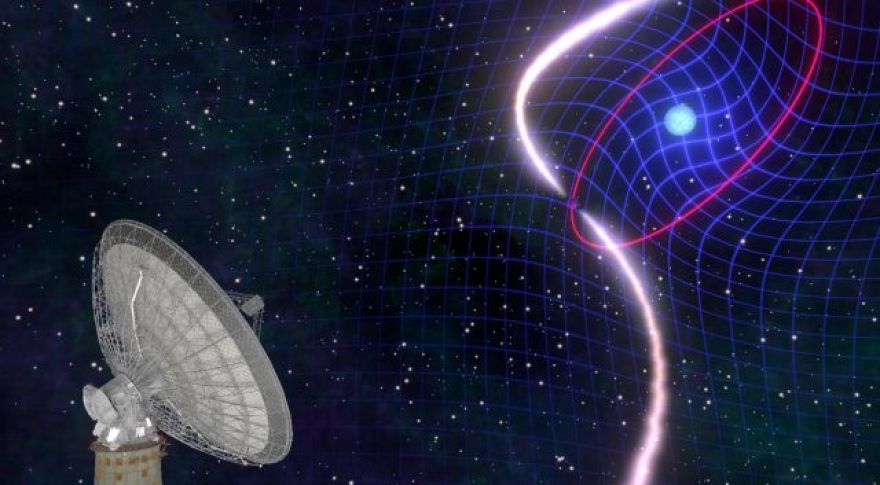
Astronomers Spot Star That Drags the Universe Along With It
General relativity makes numerous predictions about gravity, time, and the very nature of the universe. So far, all the predictions we’ve been able to test have held up to scrutiny, but the effects are usually subtle and difficult to visualize. Astronomers have spotted a distant star that further confirms general relativity in a more obvious fashion — it’s
Einstein’s general theory of relativity predicts that massive objects can tug at the fabric of the universe as they move through space, which is called “frame-dragging.” Scientists collected the first experimental evidence of frame-dragging almost 20 years ago, but the effect is minuscule.
Researchers from the OzGrav ARC Centre of Excellence at Swinburne University of Technology discovered PSR J1141-6545 almost 20 years ago. The system consists of a pulsar (a rotating neutron star) orbiting a white dwarf. A white dwarf is the collapsed core of a dead star that was too small to form a black hole or neutron star. This one is about the same size as Earth but thousands of times more massive, and that means the effect of frame-dragging should be much more intense. The pulsar orbits the white dwarf every five hours, and the radar wave beams of the pulsar sweep past Earth. This combination of factors makes PSR J1141-6545 an ideal real-world laboratory in which to study frame-dragging.
The team has gone back multiple times over the years to observe PSR J1141-6545. Because the radio beams from the pulsar sweep Earth 150 times per minute, scientists can accurately track the system’s orbit. Not only is the pulsar racing around the white dwarf, but the effects of frame-dragging cause the pulsar’s orbit to tumble in space. This twisted region of space-time can only be explained by frame-dragging.
Einstein noted that many of the predictions in general relativity would never be directly observable, but even he couldn’t foresee the incredible advances in astrophysics. We can detect from millions of light-years away, take , and even watch as a star twists space-time in knots.
Now read: